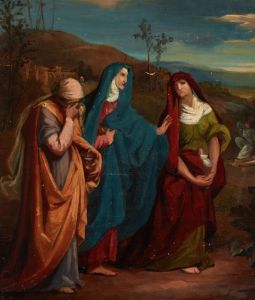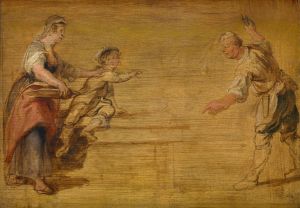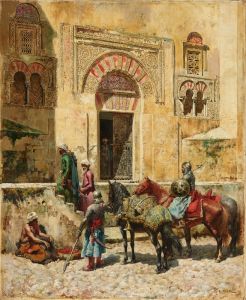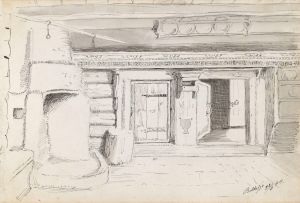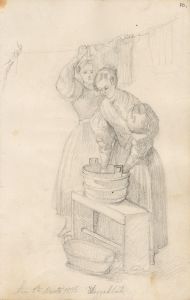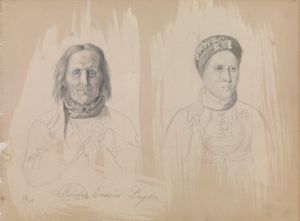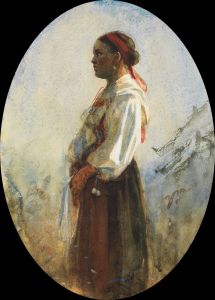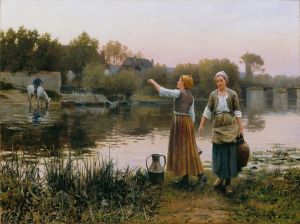
Etter tvekampen
A hand-painted replica of Adolph Tidemand’s masterpiece Etter tvekampen, meticulously crafted by professional artists to capture the true essence of the original. Each piece is created with museum-quality canvas and rare mineral pigments, carefully painted by experienced artists with delicate brushstrokes and rich, layered colors to perfectly recreate the texture of the original artwork. Unlike machine-printed reproductions, this hand-painted version brings the painting to life, infused with the artist’s emotions and skill in every stroke. Whether for personal collection or home decoration, it instantly elevates the artistic atmosphere of any space.
"Etter tvekampen" (After the Duel) is a painting created by the Norwegian artist Adolph Tidemand in 1853. Adolph Tidemand, born on August 14, 1814, in Mandal, Norway, is renowned for his contributions to Norwegian romantic nationalism and his detailed depictions of Norwegian folk life and traditions.
The painting "Etter tvekampen" is a poignant representation of the aftermath of a duel, a theme that was relatively common in 19th-century European art. The scene captures the somber and reflective mood following the violent encounter, focusing on the emotional and physical consequences rather than the act of dueling itself.
In the composition, Tidemand employs his characteristic attention to detail and realism. The central figure in the painting is a wounded man, likely the loser of the duel, who is being tended to by a companion. The setting is a rustic interior, which is typical of Tidemand's work, as he often depicted scenes from rural Norwegian life. The expressions and body language of the figures convey a sense of gravity and sorrow, emphasizing the personal cost of the duel.
Tidemand's use of light and shadow in "Etter tvekampen" enhances the dramatic effect of the scene. The light source, possibly from a window or an unseen lamp, illuminates the wounded man and his caretaker, drawing the viewer's attention to their plight. The darker background elements create a stark contrast, highlighting the central figures and adding depth to the composition.
Adolph Tidemand's work, including "Etter tvekampen," is significant in the context of Norwegian art history. He was a key figure in the Norwegian romantic nationalism movement, which sought to celebrate and preserve Norwegian culture and identity during a time of increasing national consciousness. Tidemand's paintings often depicted traditional Norwegian customs, costumes, and rural life, contributing to a sense of national pride and cultural heritage.
"Etter tvekampen" reflects Tidemand's skill in capturing human emotion and his commitment to portraying authentic Norwegian scenes. The painting is part of a broader body of work that includes other notable pieces such as "Haugianerne" (The Haugeans) and "Brudeferden i Hardanger" (The Bridal Procession in Hardanger), the latter of which he co-created with Hans Gude.
Adolph Tidemand's legacy endures through his contributions to Norwegian art and his influence on subsequent generations of artists. His works are housed in various museums and collections, including the National Gallery in Oslo, where "Etter tvekampen" and other significant pieces can be viewed by the public.
In summary, "Etter tvekampen" by Adolph Tidemand is a masterful depiction of the aftermath of a duel, characterized by its emotional depth, realistic detail, and cultural significance. It stands as a testament to Tidemand's artistic talent and his role in the romantic nationalism movement in Norway.





